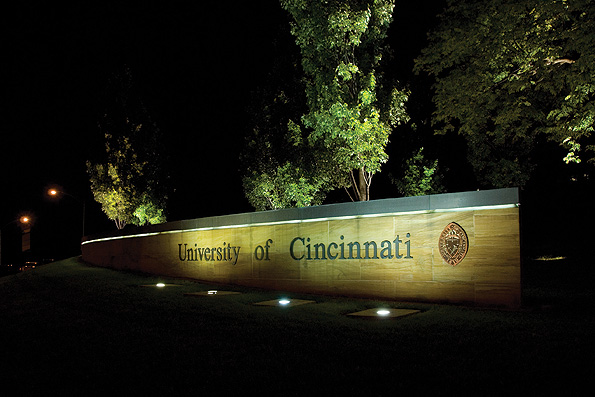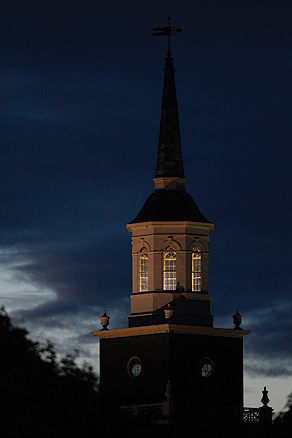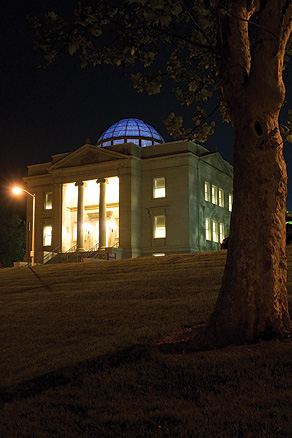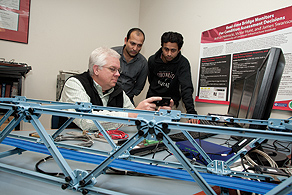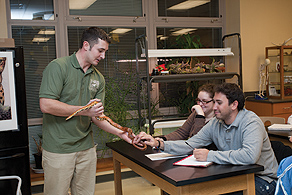Functioning as a small city, the University of Cincinnati never sleeps.
by Deborah Rieselman
”Moonlight is sculpture,” said Nathaniel Hawthorne. And those who have never witnessed UC between sunset and sunrise have missed a work of art. Dramatic lighting, shadows and moonbeams accentuate the campus that Forbes Magazine named among the world’s most beautiful last year.
An exciting energy also comes from students, faculty and staff who socialize, study and work at all hours of the day, seven days a week. It’s the same energy that, last fall, attracted a record-breaking 41,357 students to UC and is currently bringing in even more applicants.
In many ways, an institution with a $1.09 billion budget and a population approaching 100,000 (including students, faculty, staff, doctors, patients and guests) is actually a small city — one that requires its own police department, utility plant and a staff to maintain six campuses, totaling 473 acres and nearly 13.5 million square feet in 117 buildings. Providing public safety, community outreach, education, recreation, research, food service and housing, all within an award-winning setting, is a tall endeavor. And it can’t be done in less than 24 hours a day.
MOUSE OVER IMAGES FOR CAPTIONS
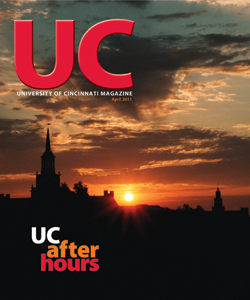
 Past Issues
Past Issues